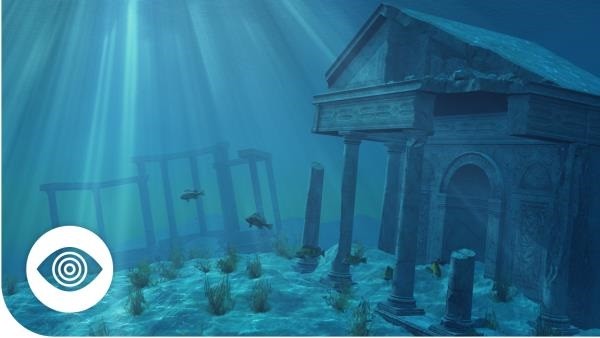Orichalcum, an ancient alloy referenced by Plato as having come from Atlantis, has been found in a shipwreck off the coast of Gala, Sicily. Sebastiano Tusa, Sicily’s superintendent of the Sea Office, and colleagues discovered the cache of 39 ingots 1,000 feet from the coast in 10 feet of water.
The ingots date to 585 B. C. E. The time frame corresponds to Plato’s report of Atlantis in his ‘Critias’ dialogue. Plato describes the metal as shining and red. The description corresponds to a metallic analysis of the ingots that show the material is an alloy similar to modern brass.
X-ray fluorescence showed the metal is 75 percent to 80 percent copper, 15 percent to 20 percent zinc, and has traces of nickel, lead, and iron. The ancients were more than capable of producing alloys in large quantities. The process requires mixing the ores in the proper proportions and heating to the right temperature. The presence of metals other than copper and zinc are indicative of the imperfection of the alloying craft compared to present technology.
Plato also mentions Atlantis in ‘Timaeus’, a Socratic dialogue, written in about 360 B. C. E. Some ancient Egyptian texts also refer to Atlantis. The question is does this find verify the existence of Atlantis. The country of origin of the shipwreck has not been determined to date. The alloying process for making brass was known in Egypt and Mesopotamia before Plato ever wrote about the metal. Most scholars consider Atlantis to have been a real island nation that was destroyed by either a tidal wave or a volcano.















